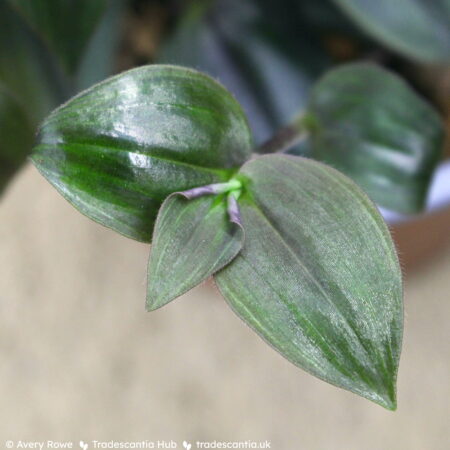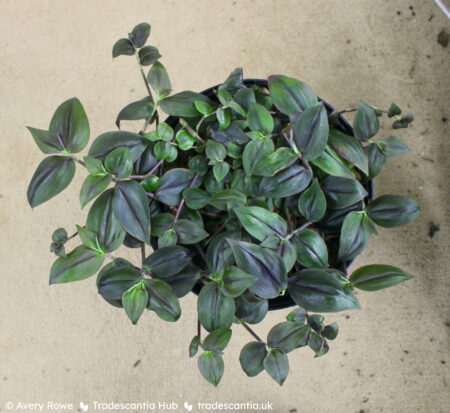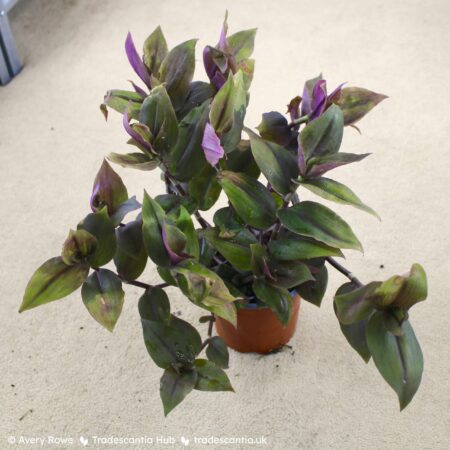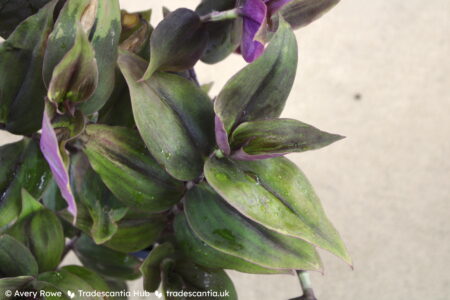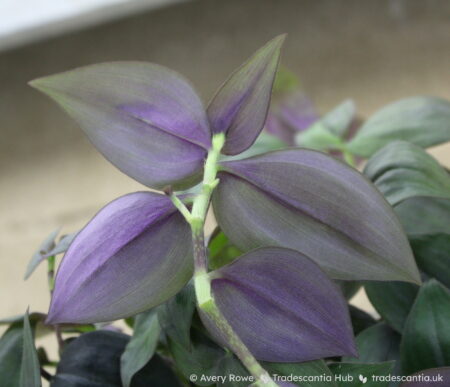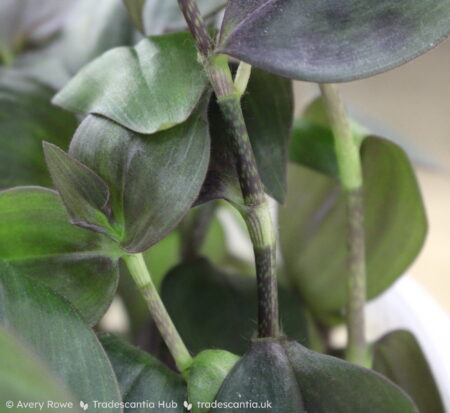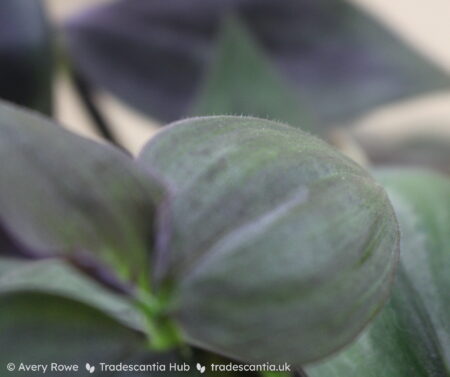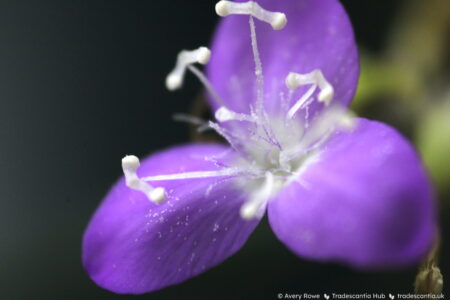Details
| Full name | Tradescantia zebrina ‘Purpusii’. |
| Name status | Accepted, the valid name for a unique cultivar. Established with a description by Brückner (1927, p. 57-58). Because it was published before 1959, the Latin name can be accepted (Brickell et al., 2016, Art. 21.11). Also known as:
Not to be confused with:
|
| Origins | Collected by A. Purpus in Veracruz, Mexico, in 1920-21 (Brückner, 1927, p. 57-58). |
| Classification | Originally published as Zebrina purpusii (Brückner, 1927, p. 57-58). This is now considered a botanical synonym for the species Tradescantia zebrina (POWO, 2022), so the plant is treated as a cultivar with the same name (Brickell et al., 2016, art. 21.5). |
| Legal protection | None. |
| Availability | Available from some nurseries and specialists. |
Description
Preserved as a herbarium specimen (“Tradescantia zebrina ‘Purpusii'”, 2022).
Described with reference to the RHS Colour Chart (6th Edition: 2019 reprint).
The entire plant can vary its appearance dramatically in different conditions – changing in growth habit, leaf shape, size, and colour. It’s impossible to cover every possible variation, but this general summary describes a typical healthy plant.
| Species | Tradescantia zebrina. |
| Growth habit | Stems initially grow upright but soon start to sprawl and trail out of any container. |
| Foliage | Stems are 2-6mm wide, with internodes 1.5-7cm long – generally longer near the base and shorter towards the growing tips. They are greyish reddish brown (200B) to greyish reddish purple (N77C), with lighter green freckles, and completely hairless. The leaves are slightly asymmetrical pointed ovals, 4-8cm long and 2-4.5cm wide. There are a few hairs at the top of the sheath, and sometimes hairs scattered all over the leaf surfaces. Mature leaves are dark greyish green (N189A) to moderate olive green (146A). The newest growth in intense light is greyish purple (N77A) to dark red (187A) or dark greyish reddish brown (200A). Leaf undersides are dark purple (79A) to greyish purple (N187B). Sheaths are moderate yellow green (146D) to light yellow green (145D). |
| Flowers | Flowers are 8-14mm across. Petals are strong purple (N80B) to light reddish purple (N75A), with a white centre to the flower. Anthers are white, and the stamen filamens are a mixture of white and purple. |
References
Brückner, G. (1927). Zur speziellen Systematik der Commelinaceae [On the special systematics of the Commelinaceae]. Notizblatt des Königl. botanischen Gartens und Museums zu Berlin [Note sheet of the royal botanical garden and museum in Berlin], 10(91), 55-61. doi:10.2307/3994817. Open access link.
Tradescantia zebrina ‘Purpusii’. (2022). [Herbarium specimen, barcode WSY0168479]. RHS Wisley Herbarium.
Brickell, C. D., Alexander, C., Cubey, J. J., David, J. C., Hoffman, M. H. A., Leslie, A. C., Malécot, V., Jin, X. (2016). International Code of Nomenclature for Cultivated Plants. PDF link.

